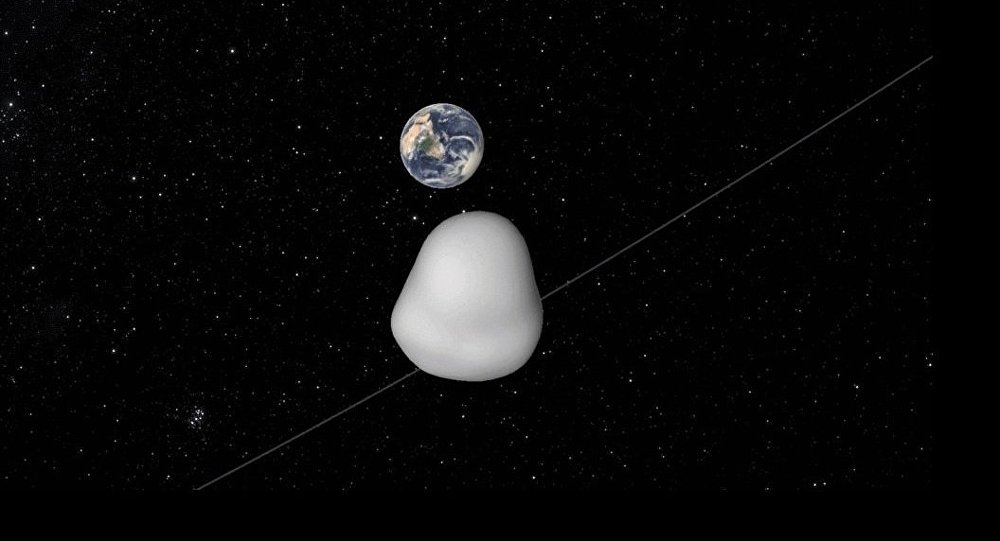
Asteroid with 30,000 miles per hour speed to navigate close to Earth on October 12
An asteroid with a rate of 30,000 miles per hour is hurling through space towards the direction of Earth at 30,000 miles per hour, but there is nothing to worry as it won’t be affecting Earth. It would just pass through a very close proximity of our planet. The asteroid has been estimated to be between 30 and 100 feet long.
Maintaining a minimum distance of 4,200 miles from Earth, the asteroid “2012 TC4” is supposed to fly past our planet on October 12. But according to NASA’s recent estimates, the distance is around 27,000 miles away from Earth and not the earlier estimated distance which is pretty safe. It might seem like a vast distance gap but its only about one-eighth the distance between our planet and the moon.
The 2012 TC4’s proximity to Earth is helping scientists gather more info about its flight path which is supposed to improve our ability to detect other asteroids that might potentially harm us in future. If possible, this study might also help prevent such circumstances, and a future collision course with our blue planet.
According to Paul Chodas, manager of the center for Near-Earth Object Studies at NASA’s Jet Propulsion Laboratory, any space enthusiast can have the chance of watching this close encounter on their own even if they aren’t some fancy astronomer. But of course, it will require some preparations to be made before the event. It might also be a challenge as you need to know where to point the telescope at a particular time as the asteroid is quite fast and would require constant monitoring. An 8-inch telescope is apt to get a glimpse of this rock but to know the definite position of the celestial body you will need to use JPL’s “Horizons ephemeris service” which can help you derive precise coordinates of the ongoing event from the part of the world you live in.
A computer controlled telescope would also be a significant advantage, and any experienced amateur stargazer should be able to track the object on that particular evening. A glance at the 2012 TC4 would be impossible without a telescope as it isn’t bright enough to be seen with naked eyes. According to scientists, the asteroid will only have”13th magnitude” brightness which is very faint. In a brightness magnitude scale, the sun shines at -26.7 and our naked eye can see only up to positive 6. This means the higher the number on the scale, the fainter the brightness. Spotting the 2012 TC4 can be a bit of pain unless you are dedicated to this sort of thing and do not give up easily. The good news is at least the asteroid is maintaining a reasonable distance and isn’t on a collision course with us.


